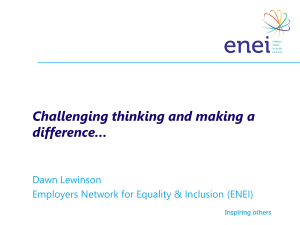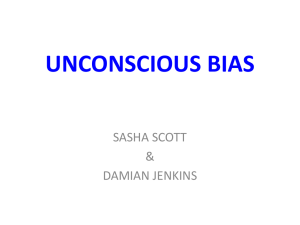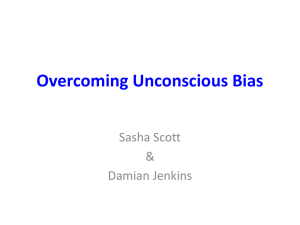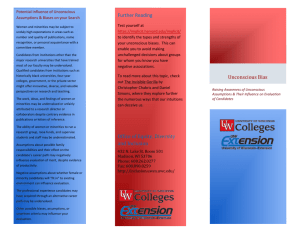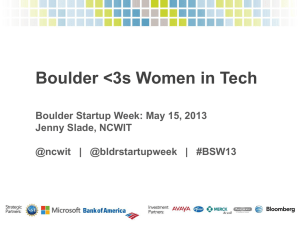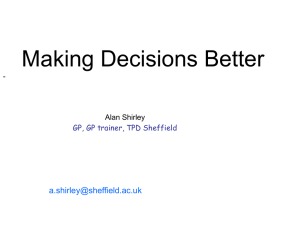Removing the Barriers to Change
advertisement
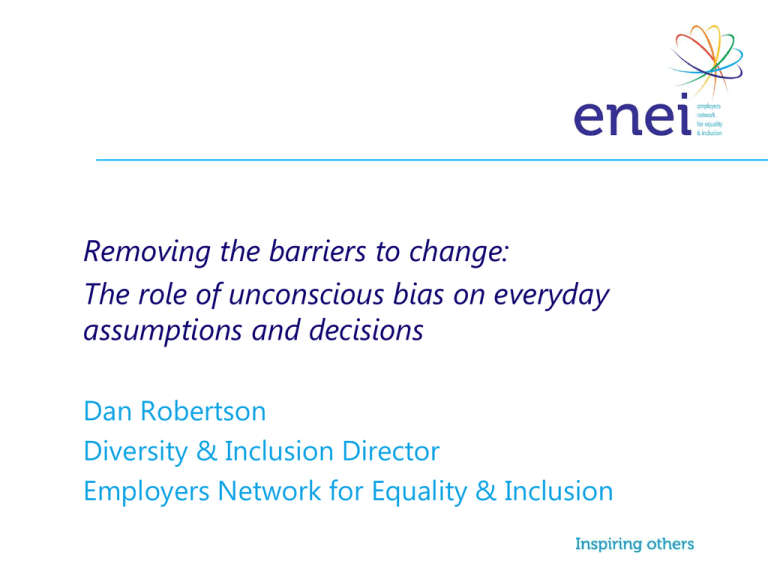
Removing the barriers to change: The role of unconscious bias on everyday assumptions and decisions Dan Robertson Diversity & Inclusion Director Employers Network for Equality & Inclusion A bat and ball cost £1.10 The bat costs one pound more than the ball. How much does the ball cost? Diversity & Inclusion: What’s the difference? Diversity is … Inclusion is … Diversity and organisational culture Organisational cultures often work against the diversity and inclusion principles… …simply because we have a natural tendency to recruit people like us. Organisations also demanded high levels of conformity. What is unconscious bias? “Unconscious biases are our unintentional people preferences…. They are the result of our limited cognitive capacity; we implicitly and automatically both group and categorise people to avoid having to conduct completely new assessments for every new person. We unconsciously assign positive and negative value to the categories we use.” The nature of bias: The process of fast and slow thinking System One (Fast thinking) • Driven by intuition and emotions System Two (Slow thinking) • Requires attention and effort • Helps to regulate System One The neurology of Bias Unconscious biases are triggered and enacted between 30 and 100 milliseconds (Conscious thinking takes 300 milliseconds to even begin processing) The ‘smart’ brain is lazy. It likes to work efficiently and minimise the work of the frontal lobes. What the brain fires together, it wires together, forming emotional associations They are automatic and rapid Fast thinking and social stereotypes A bat and ball cost £1.10 The bat costs one pound more than the ball. How much does the ball cost? Explicit vs Implicit Social Bias (Abrams & Houston 2006) Jones, P 2005 Implicitly 3000 Affinity bias Affinity (like me) bias: leads us to favour people who are like us. Commonness leads to Comfort leads to Competence “He reminds me of myself at his age” Gender, ethnicity, social background, accent, nationality, sexual orientation and disability. The Talent Pipeline - Feedback Challenge • People in organisations are anxious to have conversations about difference for fear of causing offense • Results in ‘social distancing’ behaviours and a failure to capitalise on otherwise positive relationships De-Biasing People Decisions Check List 1. 2. 3. 4. 5. 6. 7. Know your own (individual/group) biases Don’t get anxious about saying ‘the right thing’ Change your newspaper Attend a employee or community network: e.g. LGBT Have lunch with one different and ask for their ideas Watch for who attends social and community events Take a chance; allocate a task or piece of work which involves trusting someone / a group new and different 8. Politely ask someone to explain a work allocation or a funding decision 9. Sit in on someone else’s discussions and listen for affinity bias 10. Mentor or sponsor some different to you Making a Change Attitude How do I feel about it? Organisational Norms Intention Behaviour How will others judge me? When......... Behavioural Controls How easy is it? ...............I Will Contact: Dan Robertson Diversity & Inclusion Director Employers Network for Equality & Inclusion Tel: 07946 466 180 E: dan.robertson@enei.org.uk Twitter: @dan_robertson1
